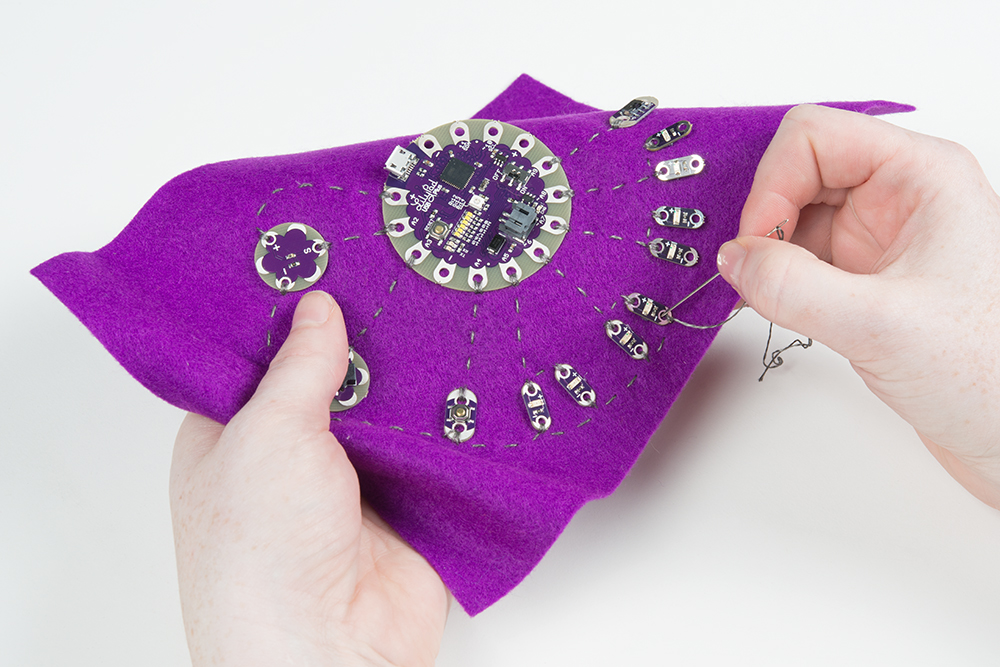Getting Started with Lilypad

Read this introductory guide to Lilypad to get an understanding of the components and how they work together. You’ll need this understanding later to create your own e-textile project.
In the previous module you created a simple circuit using Lilypad LEDs and lilypad battery pack. In this module we are going to build upon those skills and introduce the use of wearable microcontrollers like the Arduino Lilypad platform. Essentially, the Lilypad platform it is a condensed version of the Arduino boards you used in MC102. While the Lilypad very similar to other Arduino boards in its functionality, but it has a few key design differences that allow it to be used in wearable applications. The standoffs and mounted components are a lower profile allowing the board to be flatter and not snag fabrics, and the output components are broken into “petals” that allow you to sew sensors and LEDs to the board.

via CC BY-NC-SA 4.0 DEED
There are two main types of Lilypad boards. The larger Lilypad Simple and Lilypad USB allow you to connect to a computer and upload your code to the microcontroller. This allows you to make use of other input devices like sensors and buttons. The smaller Lilypad boards like the Lily Tiny and the Lily Twinkle come preprogrammed and can be used to easily and quickly get started on a project.

Photo by Sparkfun
These Lilypad boards allow you to add more interactivity to your project. The Lily Tiny board gives you ways to add various blinking lights to your project. The Lilypad Simple and USB unlock more possibilities by letting you add sensors and other outputs to your project.
Our lab contains both the Lilypad protoboard and the Lily Tiny board for you to use. You can use either for this module.
About the Lily Tiny board:
This is a pre-programmed board that allows you to quickly add blinking lights to any e-textile project. The Lily Tiny connects to the battery pack like the LEDs you used in MC203, but here it acts an intermediary between the battery and the lights to control the lights. The lily tiny takes in power from the battery pack through its negative and positive inputs. It has four output “petals” that control the lights in different blinking patterns.

via CC
